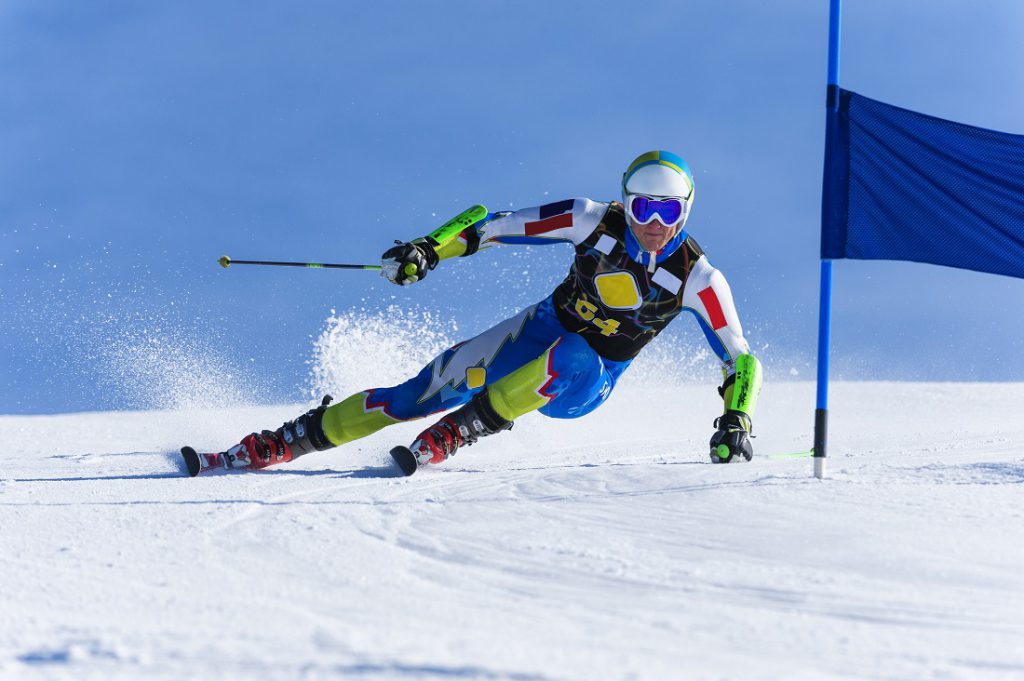Athletes who compete in winter sports are no strangers to the effects of winter weather on the skin. From harsh sunburns (yes, you can still get those in frigid temperatures) to unpleasant windburns, winter poses several unique skin care challenges. In fact, anyone spending extended time outdoors during the winter months must practice sun, wind and snow protection.
Sun Protection is Always Weather Permitted
Sun protection is a year-round feat, regardless of temperature, sun visibility and location. Exposure to both UVA and UVB rays increases skin cancer risk. While UVB rays, which cause sunburns, are more prevalent in the summer months, UVA rays that can cause wrinkles and photoaging are present in equal intensity throughout all four seasons. As much as 80 percent of UVA rays can penetrate clouds and fog, making it absolutely vital to use sun protection, even in overcast conditions.
Wind Breakers
Wind is a constant challenge for skiers and snowboarders, who often reach speeds of 75 mph.
“We think that wind most likely has a double impact on the skin: It’s a direct irritant that causes the upper layers of the skin to slough off, and that shedding leaves the newly exposed skin more vulnerable to damaging UV rays,” wrote dermatologists Jennifer C. Tang, MD, and C. William Hanke, MD, in the 2017 Skin Cancer Foundation Journal.
Elevation is also a factor when it comes to winter sun protection. At higher altitudes, the thinner atmosphere absorbs less UV radiation, meaning sun exposure increases about 4 to 5 percent with every 1,000 feet above sea level.
And finally, although snow makes a lovely landscape, the surface reflects up to 80 percent of UV rays, meaning the sun hits you twice.
Take it From the Pros
It might sound like doom and gloom, but competitors know how to protect themselves. Before hitting the slopes, fan-favorite Olympic alpine skier Lindsey Vonn relies on sun protection products to get her through the day. “I put [sunscreen] on in the morning and then foundation on top. And I usually use a foundation with SPF in it to double up,” Vonn told Glamour magazine. Ted Ligety, an alpine ski racer and two-time Olympic gold medalist, told The Skin Cancer Foundation, “When I’m outdoors, I make sure to practice proper sun protection, including wearing a broad-spectrum sunscreen and UV-blocking shades.”
Figure skaters, who often incorporate a full beauty look as part of their routine, are no stranger to sun protection even while remaining mostly indoors. Many may favor the tanned look, but for these stylish participants, tanning beds and lying in the sun are not options. Ice dancer Madison Hubbell spoke to NBC4 in Columbus, Ohio, about the safe cosmetic options she uses for performing: “This year I started to use sunless tanner, because the lights in the rink can make me look really pale. And risking skin cancer with a tan is wayyyy out of style!”
If you are a winter sports enthusiast, here are some sun protection tips to keep in mind:
- Cover up with clothing. If you suspect you might shed layers as you warm up, be sure to apply sunscreen to skin that could become exposed. Don’t forget your hands either when the gloves come off!
- Wear sunglasses or goggles that offer 99 percent or greater UV protection and have wraparound or large frames, which will protect your eyes, eyelids and the sensitive skin around your eyes — all common sites for skin cancer.
- Wear hats to protect the top of the head and ears.
- Use a broad-spectrum (UVA/UVB) sunscreen with an SPF of 30 or higher whenever spending extended time outdoors. Apply sunscreen to all exposed areas and reapply every two hours or after excessive sweating.
- Try a moisturizing sunscreen with ingredients like lanolin or glycerin, which can help combat winter dryness.
- Protect your lips by wearing a lip balm with an SPF 30 or higher.




